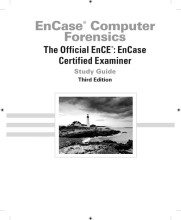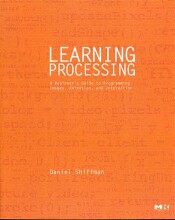File Signature Analysis and Hash Analysis - Review Questions
14 important questions on File Signature Analysis and Hash Analysis - Review Questions
2. A file header is which of the following?
A. A unique set of characters at the beginning of a file that identifies the file type.
B. A unique set of characters following the filename that identifies the file type.
C. A 128-bit value that is unique to a specific file based on its data.
D. Synonymous with file extension.
3. The Windows operating system uses a filename’s ______________ to associate files with the proper applications.
A. signature
B. MD5 hash value
C. extension
D. metadata
C. The Windows operating system uses a file's extension to associate the file with the proper application.
4. Unix (including Linux) operating systems use a file’s ______________ to associate file types to specific applications.
A. metadata
B. header
C. extension
D. hash value
- Higher grades + faster learning
- Never study anything twice
- 100% sure, 100% understanding
5. The Mac OS X operating system uses which of the following file information to associate a file to a specific application?
A. The “user defined” setting
B. Filename extension
C. Metadata (creator code)
D. All of the above
D. When determining which application to use to open a file, Max OS X gives first precedence to "user defined" settings, second precedence to creator code metadata, and third precedence to filename extensions. If non of these are present, other rules come into play.
8. When a file’s signature is known and the file extension does not match, EnCase will display the following result after a signature analysis is performed.
A. Alias (Signature Mismatch)
B. Bad Signature
C. Unknown
D. Match
11. Can a file with a unique header share multiple file extensions?
A. Yes
B. No
A. Yes, A unique file header can share multiple file extensions. An example of such a case is a .jpeg or .jpg file, which shares the same file header.
12. A user can manually add new file headers and extensions by doing which of the following?
A. Manually inputting the data in the FileSignatures.ini file
B. Right-clicking the file and choosing Add File Signature
C. Choosing the File Types view, right-clicking, and selecting New in the appropriate
folder
D. Adding a new file header and extension and then choosing Create Hash Set
C. A user can manually add new file headers and extensions by accessing the File Types view and creating a new entry, with new header and extension.
13. Select the correct answer that completes the following statement: An MD5 hash_________________.
A. is a 128-bit value
B. has odds of one in 2(to the 128th) that two dissimilar files will share the same value
C. is not determined by the filename
D. All of the above
D. An MD% hash is a 128 bit has value, and the odds of two different files having the same value is on in 2(to the 128th). A file's MD5 hash value is based on the file's data area, not its filename, which resides outside the data area.
14. EnCase can create a hash value for the following.
A. Physical devices
B. Logical volumes
C. Files or groups of files
D. All of the above
15. With EnCase 7, how many hash libraries can be applied at one time to any case?
A. One
B. Two
C. Three
D. No limit to the number that can be applied
17. Usually a hash value found in a hash set named Windows 7 would be reported in the Hash Category column as which of the following?
A. Known
B. Notable
C. Evidentiary
D. Nonevidentiary
A. Known, These hash sets have been produced from known safe sources and are categorized as Known. In most cases, they are nonevidentiary and can be ignored when conducting searches and other analyses.
18. With regard to hash categories, evidentiary files or files of interest are categorized as which of the following?
A. Known
B. Notable
C. Evidentiary
D. Nonevidentiary
B. Notable, evidentiary files or files of interest are usually categorized as Notable.
19. An MD5 or SHA1 hash of a specific media generated by EnCase will yield the same hash
value as an independent third-party MD5 or SHA1 hashing utility.
A. True
B. False
20. A hash _______ is comprised of hash _______ , which is comprised of hash ______.
A. set(s), library(ies), value(s)
B. value(s), sets(s), library(ies)
C. library(ies), set(s), value(s)
D. set(s), values(s), library(ies)
The question on the page originate from the summary of the following study material:
- A unique study and practice tool
- Never study anything twice again
- Get the grades you hope for
- 100% sure, 100% understanding






























